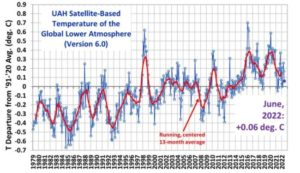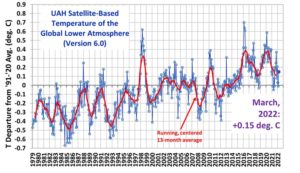by P. Homewood, Jul 5, 2022 in NotaLotofPeopleKnowThat
Jørgen Peder Steffensen is an Associate Professor at the University of Copenhagen and one of the world’s leading experts on ice cores. Using ice cores from sites in Greenland, he has been able to reconstruct temperatures there for the last 10000 years. So what are his conclusions?
-
Temperatures in Greenland were about 1.5 C warmer 1000 years ago than now.
-
It was perhaps 2.5 C warmer 4000 years ago.
-
The period around 1875, at the lowest point of the Little Ice Age, marked the coldest point in the last 10,000 years.
-
Other evidence from elsewhere in the Northern Hemisphere confirms this picture.
…



 Cropped from Figure 1,
Cropped from Figure 1, 



